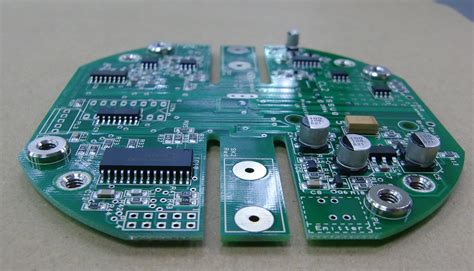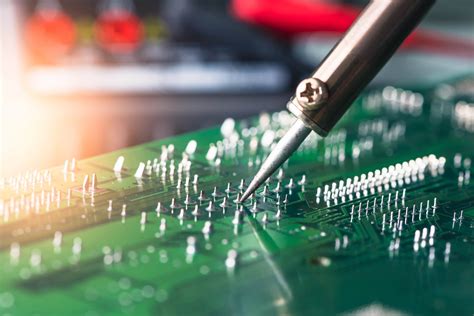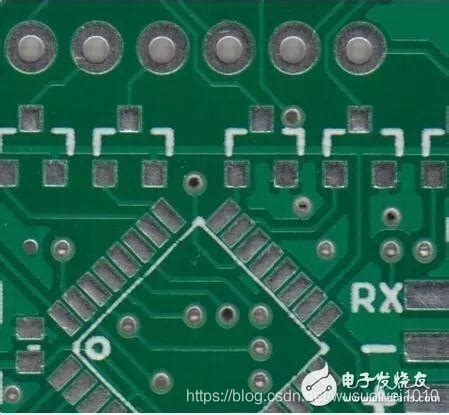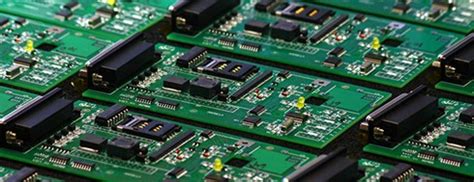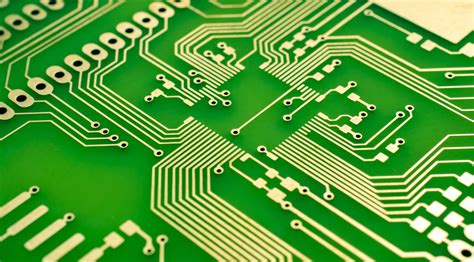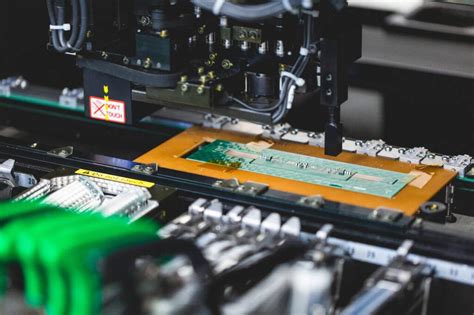Streamlining Success: Your Guide to Contract PCB Assembly
Key Takeaways
In today’s competitive landscape, understanding contract PCB assembly can significantly impact the efficiency and effectiveness of your manufacturing operations. By outsourcing your PCB assembly needs to a proficient partner, businesses can access specialized expertise, advanced technology, and streamlined processes that might otherwise be unattainable in-house. The primary advantage lies in the ability to leverage skills and resources tailored specifically for PCBA, facilitating quicker turnaround times and reducing overall production costs. To truly optimize your PCB assembly processes, it’s vital to implement strategies such as clear communication with your partner, robust design reviews, and adopting the latest industry standards. Moreover, embracing best practices can help ensure successful product development through contract assembly, allowing for greater flexibility and scalability in production efforts. Navigating the challenges of contract PCB assembly with strategic foresight will enable companies to not only meet deadlines but also exceed quality expectations, ultimately driving the success of their projects.
Understanding Contract PCB Assembly: A Comprehensive Overview
Contract PCB assembly (often abbreviated as PCBA) has become an indispensable aspect of the electronics manufacturing landscape. By outsourcing the PCB assembly process, companies can leverage specialized expertise, advanced technologies, and economies of scale that may not be feasible in-house. This approach not only streamlines manufacturing but also enhances efficiency and reduces costs associated with production.
The core of contract PCB assembly lies in forming partnerships with seasoned manufacturers who possess the necessary capabilities for high-quality assembly processes. These partners typically provide a range of services, from design collaboration to testing and logistics, ensuring that every aspect of the production cycle is meticulously handled.
To elaborate on this further, consider the following table outlining key components involved in contract PCBA:
| Component | Description |
|---|---|
| Design Specifications | Clear documentation outlining product requirements |
| Material Procurement | Sourcing components from trusted suppliers |
| Assembly Processes | Utilizing advanced machinery for efficient assembly |
| Quality Control | Implementing rigorous testing to meet industry standards |
| Shipping & Logistics | Ensuring timely delivery and inventory management |
Adopting contract PCB assembly can significantly impact a company’s product development timeline by allowing rapid scaling and flexibility in response to market demands. Furthermore, companies can redirect their resource allocation towards core competencies such as innovation and research rather than becoming mired in manufacturing challenges.
“Outsourcing your PCB needs can often result in enhanced product quality along with faster turnaround times.”
In conclusion, understanding the dynamics of contract PCB assembly is vital for organizations seeking to optimize their operations while remaining competitive. Emphasizing key strategies and effective partnerships will be instrumental in driving success within this sector.
Key Benefits of Choosing Contract PCB Assembly for Your Business
Choosing contract PCB assembly offers numerous advantages for businesses looking to enhance their manufacturing capabilities. One of the primary benefits is cost efficiency; by outsourcing the PCB assembly process, companies can significantly reduce overhead costs related to labor, equipment, and facilities. This cost-effectiveness allows businesses to allocate resources towards other critical areas like research and development, ultimately boosting innovation. Furthermore, experienced contract manufacturers bring specialized expertise and advanced technologies to the table, ensuring high-quality production standards for your PCBA needs. This access to top-notch resources minimizes the risk of errors and accelerates the assembly timeline, leading to faster time-to-market for your products. Additionally, leveraging a contract PCB assembler allows businesses to scale production up or down with ease according to demand fluctuations, providing vital flexibility in an ever-changing market landscape. Overall, embracing contract PCB assembly empowers organizations to streamline their production processes while maintaining a focus on key operational objectives.
Essential Strategies for Optimizing Your PCB Assembly Processes
To achieve optimal efficiency in PCB assembly (PCBA), it is crucial to implement strategies that streamline production and minimize potential setbacks. One essential strategy is to embrace automation within the assembly process. Automation technologies can significantly enhance precision and speed, reducing human error while lowering labor costs. Additionally, selecting high-quality components plays a pivotal role in ensuring the final product’s reliability and performance. Engaging in thorough testing and validation of these components can also prevent issues down the line. Furthermore, efficient communication between teams involved in design and manufacturing is vital for identifying potential challenges early in the PCBA process. Establishing a robust feedback loop encourages continuous improvement, allowing teams to adapt quickly to changes or obstacles in production. It is equally important to focus on supply chain management; maintaining good relationships with suppliers ensures that materials are available as needed, preventing unnecessary delays. By following these essential strategies, businesses can significantly enhance their PCB assembly processes and ultimately lead to more successful product development outcomes.
Best Practices for Successful Product Development through Contract Assembly
In the realm of PCB assembly, effective product development relies heavily on implementing best practices tailored to the unique demands of contract assembly. One fundamental approach is to ensure a seamless collaboration between your internal team and the chosen contract manufacturer, fostering clear communication regarding specifications and timelines. It’s crucial to establish a comprehensive design review process that allows for early identification of potential issues, which can significantly reduce development delays. Furthermore, implementing rigorous quality control measures during the PCBA process not only enhances reliability but also minimizes costly rework. Utilizing advanced prototyping techniques can expedite feedback loops and streamline iterations, promoting rapid innovation while maintaining alignment with business objectives. Moreover, leveraging industry-standard tools for project management ensures transparency and accountability throughout the manufacturing phases. By adopting these best practices in your contract PCB assembly endeavors, you pave the way for successful product development that meets market demands while optimizing resource utilization.
Navigating the Challenges of Contract PCB Assembly: Tips for Success
When engaging in contract PCB assembly, companies often encounter a variety of challenges that can impede the progress of their projects. Understanding these challenges and developing strategies to overcome them is essential for success. One of the primary obstacles is ensuring high-quality standards throughout the PCB assembly process. Businesses should establish clear communication with their contract manufacturer to define quality expectations and regularly review output to enforce these standards. Additionally, supply chain disruptions can pose significant risks; therefore, developing strong relationships with suppliers and maintaining an agile sourcing strategy can help mitigate this issue.
Moreover, aligning production timelines between your company and the contract assembler is crucial to avoid delays in product launches. A meticulous planning phase that includes detailed timelines, milestone tracking, and contingency plans will streamline operations significantly. Lastly, understanding the intricacies of design for manufacturability (DFM) is vital—design changes made late in the process can lead to costly delays and increased production costs. By taking a proactive approach in addressing these challenges, companies can optimize their PCBA processes, ensuring efficient product development and successful outcomes for all stakeholders involved.
Evaluating and Selecting the Right Contract PCB Assembly Partner
When it comes to contract PCB assembly, the selection of the right partner can significantly influence the overall efficiency and success of your project. As you evaluate potential collaborators, consider a few critical factors that can set the foundation for a productive relationship. First, assess their expertise and experience in PCB assembly (PCBA), particularly within your industry. A partner with a proven track record in handling your specific requirements is invaluable. Next, examine their technological capabilities; they should possess advanced machinery and software that can accommodate both low-volume production and scalability as your needs grow. Additionally, focus on their quality control measures. A robust quality assurance process ensures that every PCB assembly project meets stringent standards, reducing defects and rework that could impact your timeline. Communication is another vital aspect; a partner who demonstrates transparency and responds promptly will help foster collaboration throughout the development process. Finally, consider their pricing structure—and remember that the cheapest option may not always deliver the best quality or service. Striking a balance between cost-effectiveness and quality is essential for long-term success in contract assembly. By taking these factors into account, you can confidently select a contract PCB assembly partner that aligns with your business goals and enhances your manufacturing efficiency.
Future Trends in Contract PCB Assembly: What to Expect
As the landscape of contract PCB assembly continues to evolve, several emerging trends are expected to shape the industry in the coming years. One key trend is the increasing demand for flexible manufacturing solutions. With the rapid pace of technological advancements, businesses are seeking PCB assembly services that can easily adapt to changing product specifications and market requirements. This demand for agility is pushing contract manufacturers to invest in state-of-the-art equipment and technologies that enhance their production capabilities.
Another significant trend is the integration of automation and smart technology in pcba processes, which aids in improving efficiency and reducing human error. Automated assembly lines equipped with advanced robotics are becoming more prevalent, allowing manufacturers to achieve higher precision at a faster pace. Additionally, the incorporation of data analytics helps monitor production cycles and optimize processes for better output quality.
Sustainability has also emerged as a critical focus area within contract PCB assembly. As industries shift towards greener practices, there is a growing emphasis on using environmentally friendly materials and processes throughout manufacturing. Companies that prioritize sustainability not only contribute positively to the environment but also position themselves favorably in the eyes of an increasingly eco-conscious consumer base.
Lastly, with globalization being a driving force, businesses must consider global supply chains when collaborating with contract PCB assembly partners. The need for transparent communication and robust logistics will be crucial as companies look to mitigate risks associated with sourcing components across borders.
In summary, these trends highlight a transformative period for pcb assembly, characterized by flexibility, automation, sustainability, and global collaboration—each essential for companies striving to maintain a competitive edge in today’s dynamic market environment.
Case Studies: Successful Implementations of Contract PCB Assembly
In the realm of contract PCB assembly, numerous companies have successfully leveraged PCBA solutions to achieve significant operational efficiency and product excellence. For instance, Company A, a mid-sized electronics manufacturer, faced challenges with scaling their production while maintaining quality standards. By partnering with a specialized contract PCB assembly provider, they were able to streamline their production processes. This collaboration enabled them to utilize advanced techniques in pcb assembly, resulting in a 30% reduction in lead time and improved reliability of their finished products.
Similarly, Company B, engaged in the automotive sector, sought innovative solutions to meet the stringent requirements of their industry. They implemented contract PCB assembly, which allowed them to focus on core competencies while outsourcing the assembly processes. As a result of this strategic decision, they not only reduced costs but also enhanced their ability to respond quickly to market demands.
These case studies exemplify how embracing contract PCB assembly can provide businesses with the agility they require in today’s competitive landscape. By understanding the intricate workings of PCBA and choosing proficient partners, organizations can significantly bolster their manufacturing capabilities and drive growth in their product development journey.
Conclusion
In summary, embracing contract PCB assembly can significantly enhance your manufacturing efficiency while reducing costs and improving product quality. By partnering with a skilled PCBA provider, businesses can leverage specialized expertise and state-of-the-art technology that would be costly to develop in-house. The key benefits, such as faster time-to-market, access to advanced production techniques, and the ability to scale operations based on demand, are invaluable in today’s competitive landscape. As industries evolve, integrating effective strategies for optimizing your pcb assembly processes is essential; this includes maintaining clear communication with your assembly partner and staying up-to-date with technological advancements. By understanding the unique aspects of contract PCB assembly, your organization can position itself for success while navigating potential challenges effectively. This approach not only fosters a smoother development cycle but also supports your overall business objectives in delivering high-quality products that meet consumer demands.
FAQs
What is contract PCB assembly?
Contract PCB assembly refers to the outsourcing of the manufacturing process of printed circuit boards (PCBs) to specialized companies. These contract manufacturers handle the assembly of components on the PCB, ensuring that it meets industry standards and specifications.
What are the benefits of using contract PCB assembly services?
Utilizing contract PCBA services can lead to significant cost savings, improved efficiency, and access to advanced technology. By partnering with experts, businesses can focus on their core competencies while enhancing production capabilities.
How do I optimize my PCB assembly processes?
To optimize PCB assembly, it is crucial to thoroughly evaluate design specifications, minimize material waste, and streamline communication with your contract partner. Implementing lean manufacturing principles can also enhance process efficiency.
What should I look for in a contract PCB assembly partner?
Choosing a reliable partner involves assessing their experience, quality control measures, and ability to meet deadlines. It’s important to ensure they have a proven track record in handling similar projects and provide excellent customer service.
Are there any challenges associated with contract PCB assembly?
Yes, challenges may include communication barriers, potential delays in production timelines, and ensuring quality standards are met. However, these can be mitigated through diligent planning and regular updates throughout the project.

